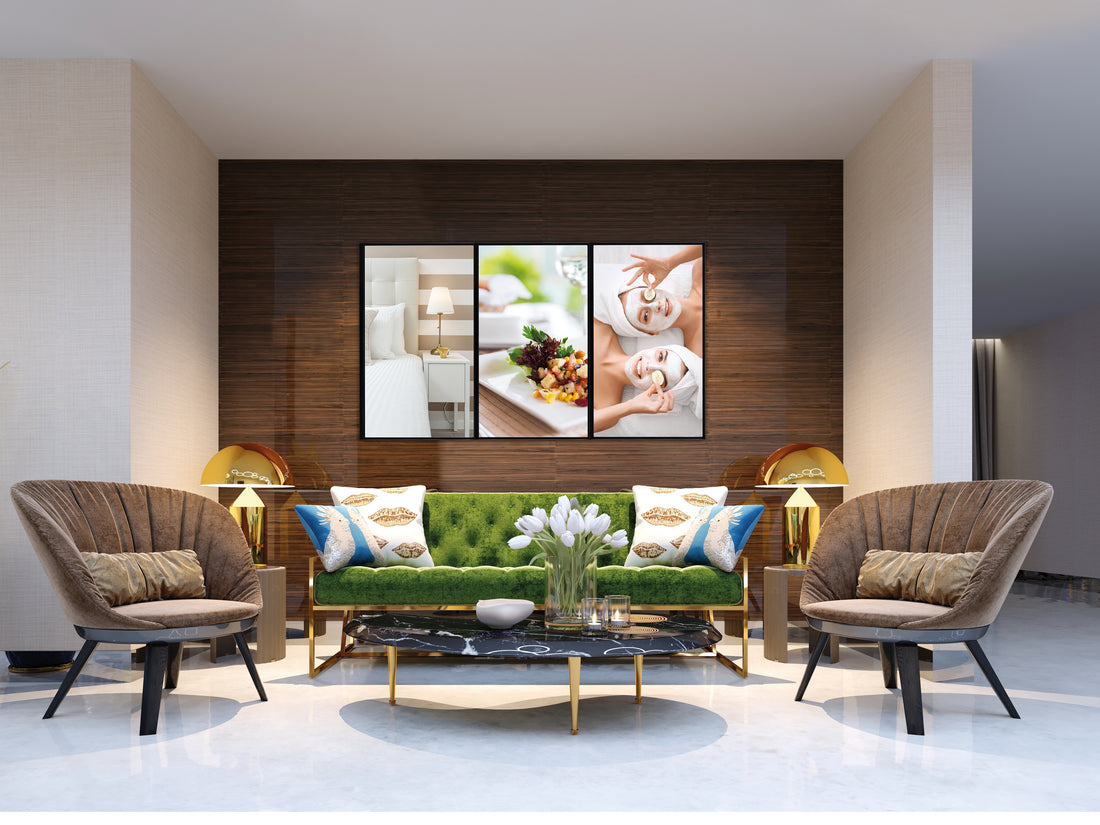
Crafting a Stunning Video Wall: A Guide to Choosing the Right LCD Displays
Share
Video walls have become a captivating means of conveying messages, showcasing content, and creating immersive experiences in various settings, from corporate boardrooms to retail spaces and entertainment venues. Selecting the right LCD displays for your video wall is crucial to achieving the desired impact. In this guide, we'll explore the key considerations to keep in mind when choosing LCD displays for your video wall project.
1. Bezel-to-Bezel Width
The bezel-to-bezel width, or the physical gap between individual displays, plays a significant role in the visual aesthetics of your video wall. Narrow bezels create a seamless, uninterrupted viewing experience, allowing your content to shine without distraction. When selecting displays, look for models with minimal bezels to achieve a sleek and cohesive look.
2. Size and Aspect Ratio
Choosing the right display size and aspect ratio is essential for creating a visually appealing video wall. Consider the available space and the viewing distance of your audience. Larger displays can make a bold statement, but they require ample space. Additionally, opt for an aspect ratio that suits your content – common ratios include 16:9 for standard video and 16:10 for widescreen presentations.
3. Display Resolution
The display resolution directly impacts the clarity and detail of your content. Higher resolution displays (e.g., 4K or 8K) are ideal for showcasing intricate visuals and text. However, keep in mind that higher resolution displays may require more powerful graphics processing units (GPUs) to handle the increased pixel count.
4. Brightness and Color Accuracy
Brightness is crucial for ensuring your content remains visible even in well-lit environments. Look for displays with high brightness levels, especially if your video wall is exposed to direct sunlight. Additionally, consider color accuracy to ensure that your content's colors are reproduced faithfully. Displays with wide color gamuts and accurate color calibration are essential for vibrant visuals.
5. Connectivity and Control
Efficient connectivity and control options simplify the setup and management of your video wall. Ensure that the displays support the necessary input sources (e.g., HDMI, DisplayPort) and control protocols (e.g., RS-232, LAN). Consider displays with built-in processors for video wall management, allowing you to easily configure and control the content across multiple screens.
6. Durability and Reliability
Video walls often operate for extended periods, making durability and reliability critical. Choose displays with robust build quality and components designed for 24/7 operation. Displays with features like advanced cooling systems and redundant power supplies can enhance reliability.
7. Budget Considerations
Last but not least, consider your budget constraints. LCD displays vary in price, and higher-end models with advanced features may come at a premium. Balance your budget with your desired specifications to ensure that you get the best value for your investment.
Conclusion
Selecting the right LCD displays for your video wall involves a careful evaluation of various factors. Bezel-to-bezel width, size, aspect ratio, display resolution, brightness, color accuracy, connectivity, durability, reliability, and budget considerations all play a role in making an informed decision. By taking these factors into account, you can craft a stunning video wall that effectively communicates your message and captivates your audience, whether you're enhancing your workspace, creating an immersive retail experience, or delivering unforgettable entertainment.
